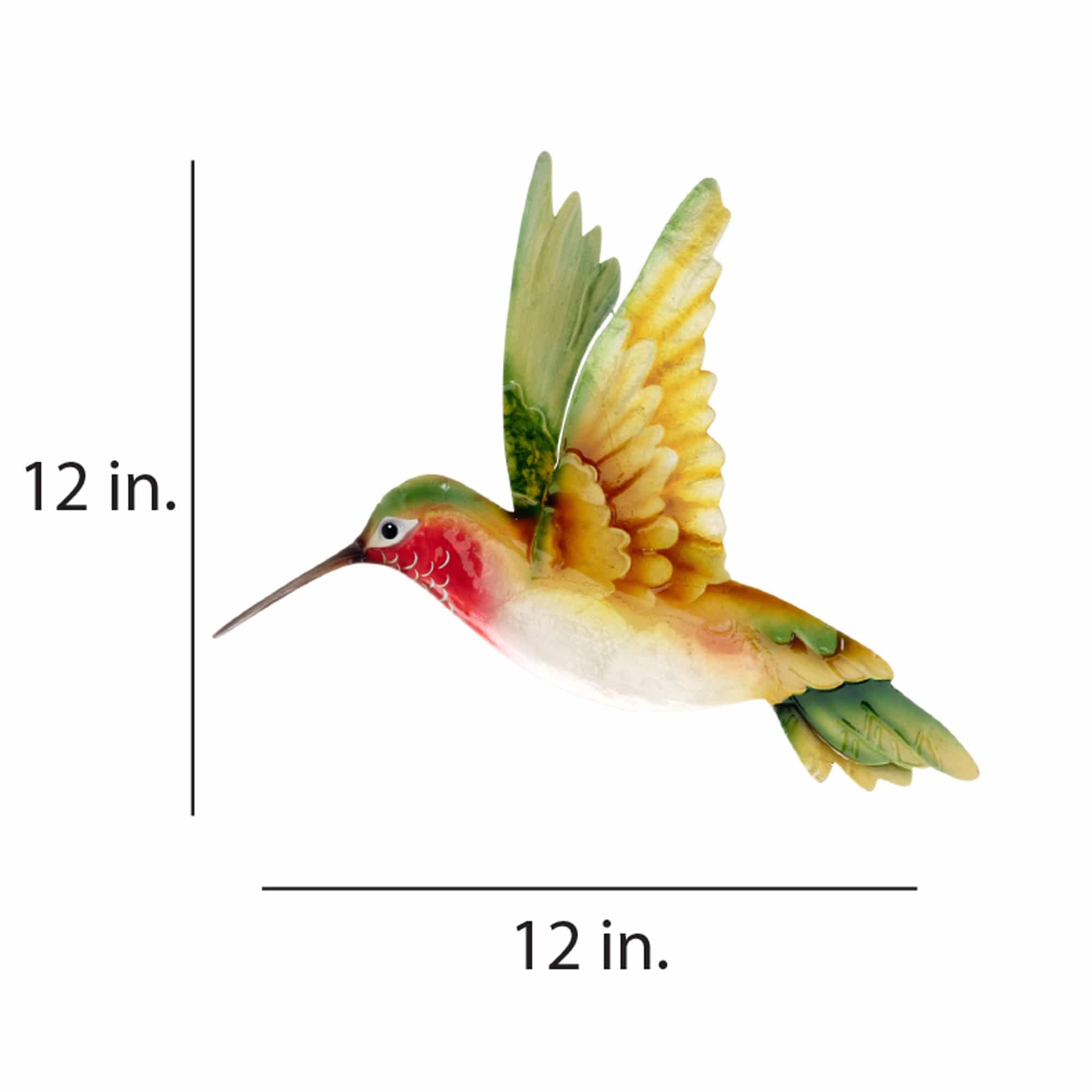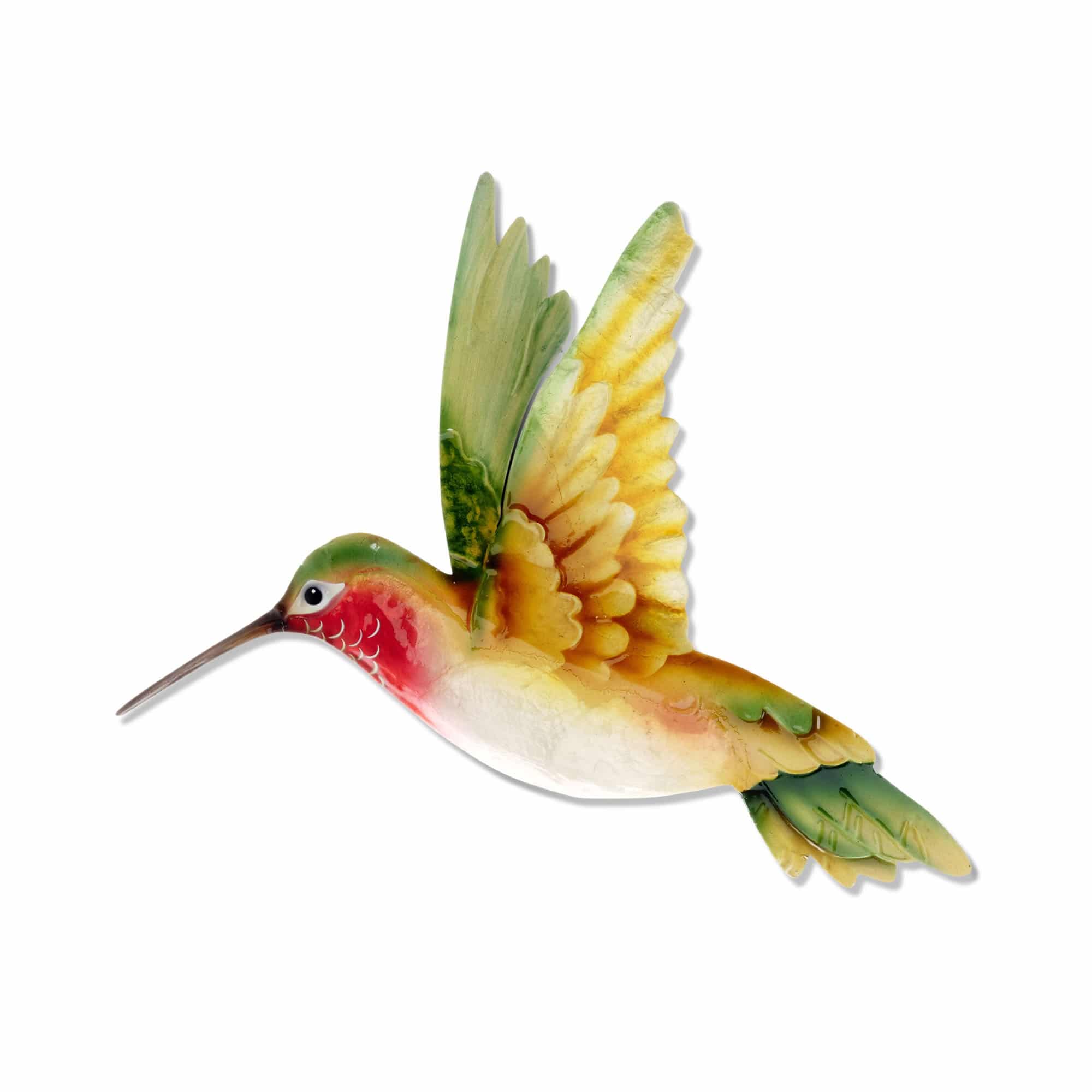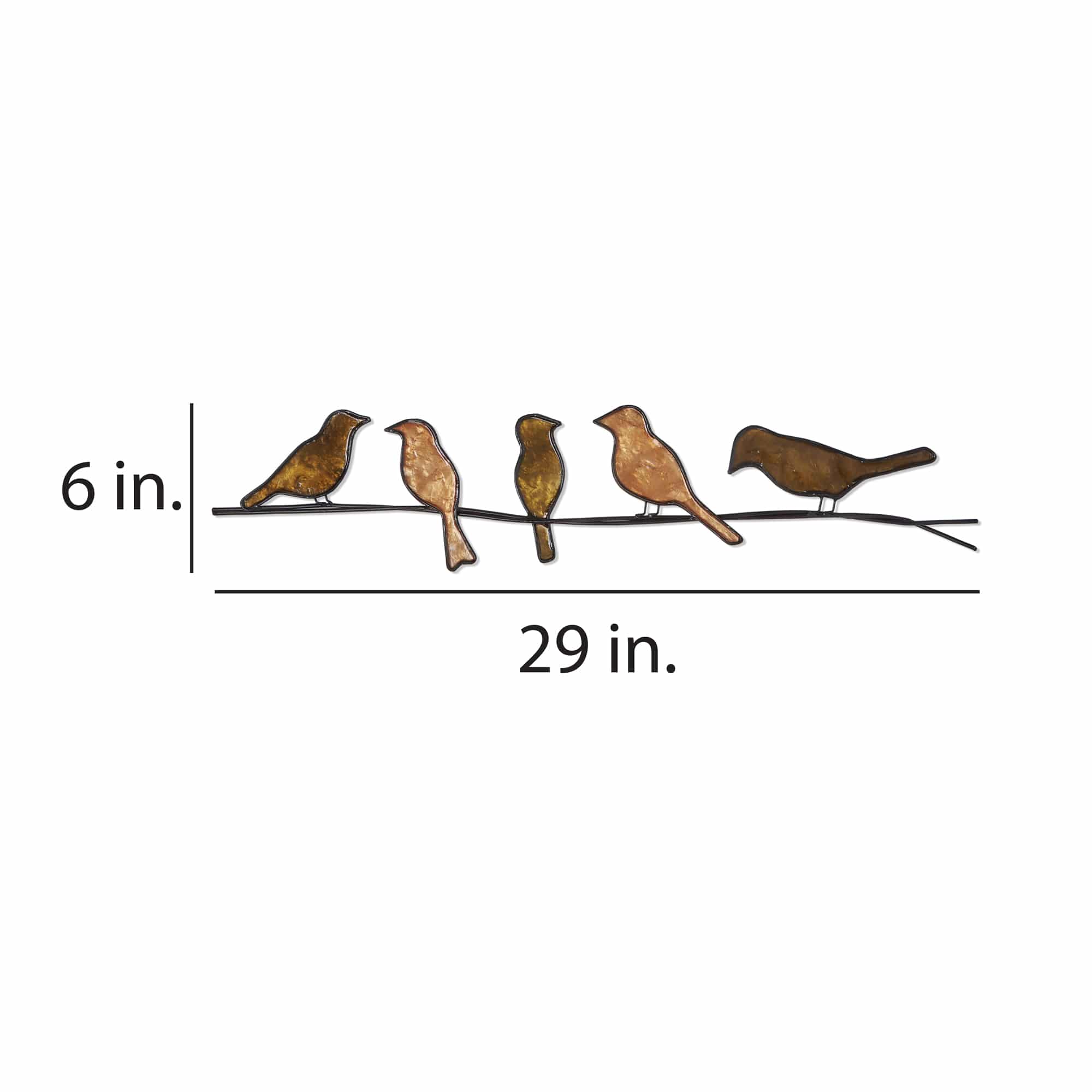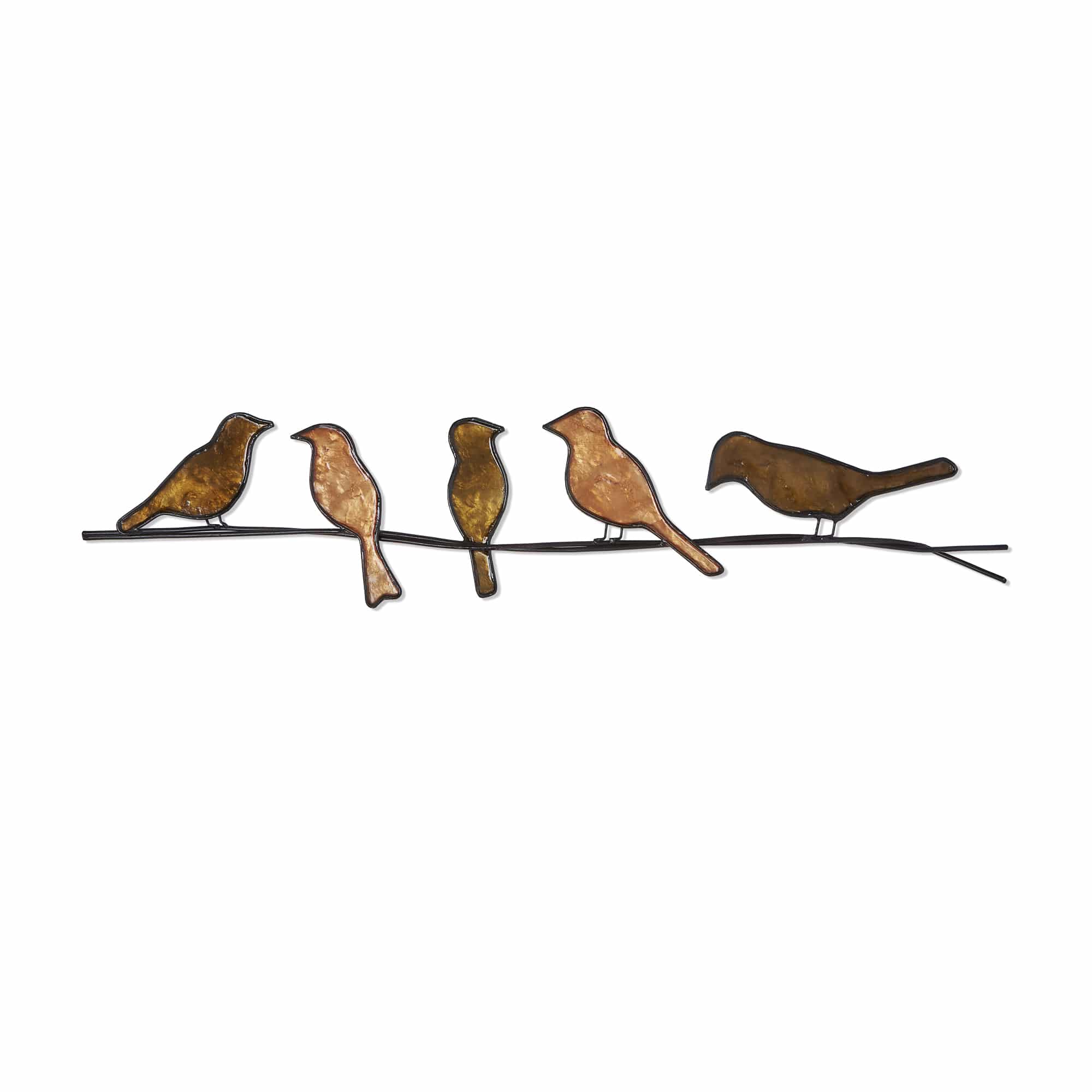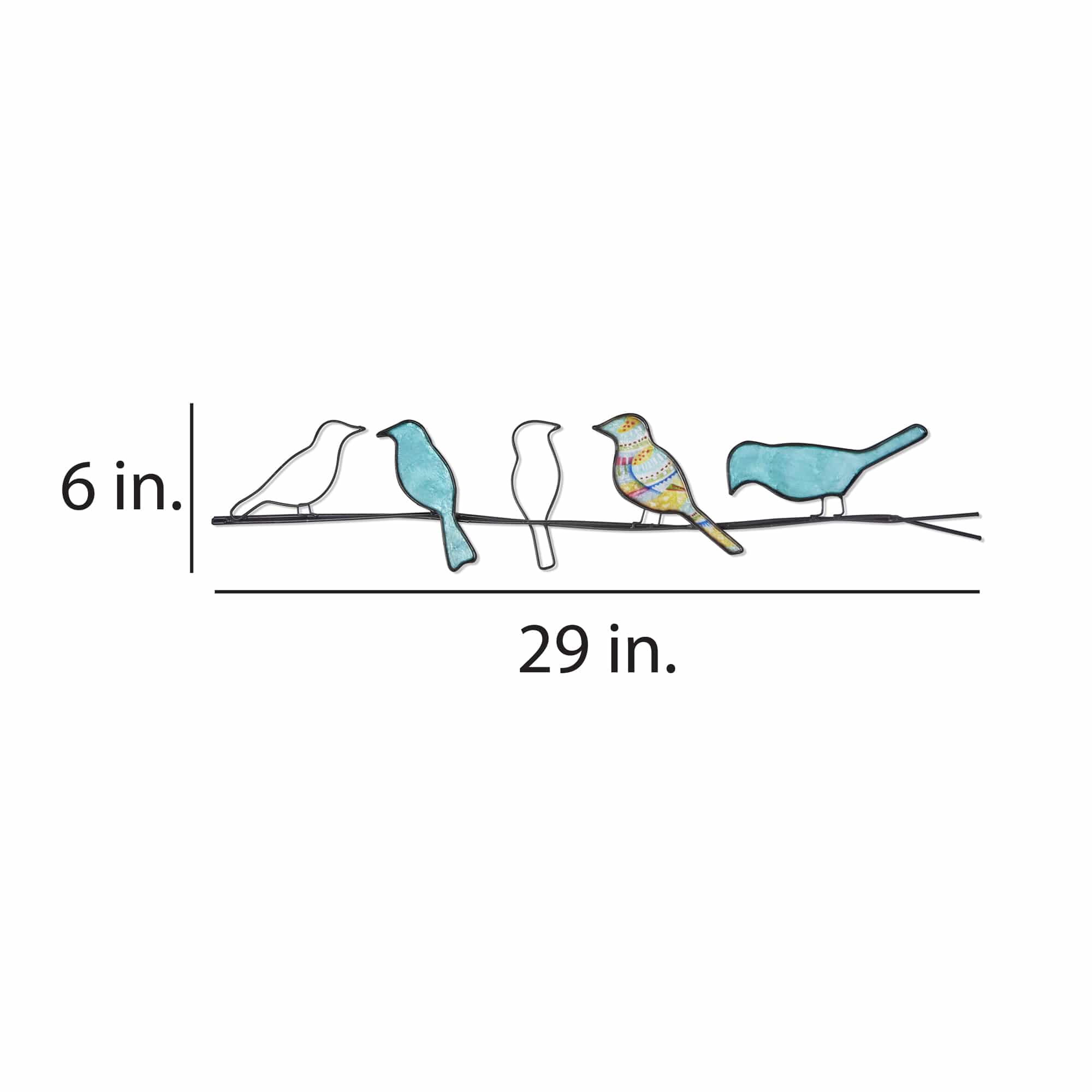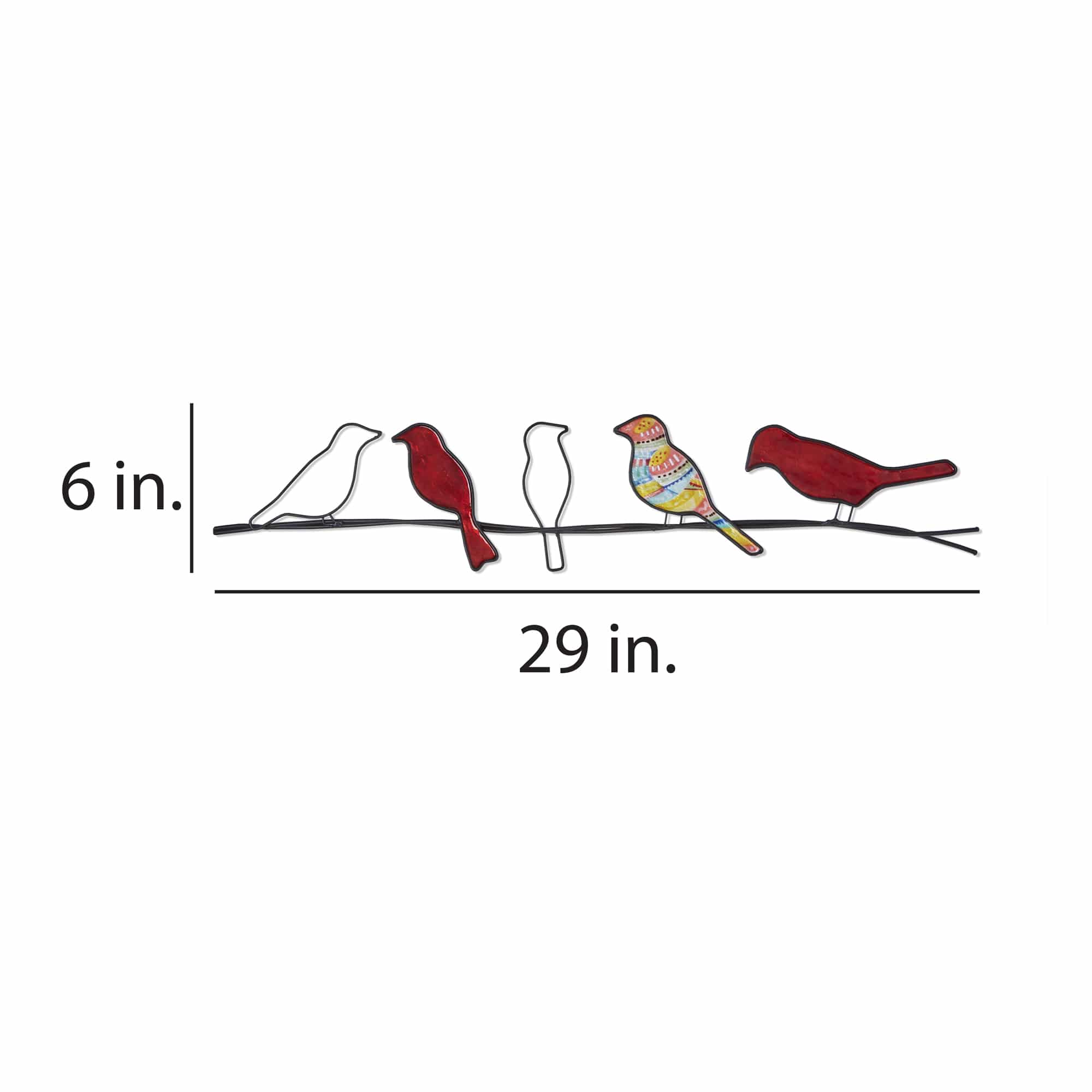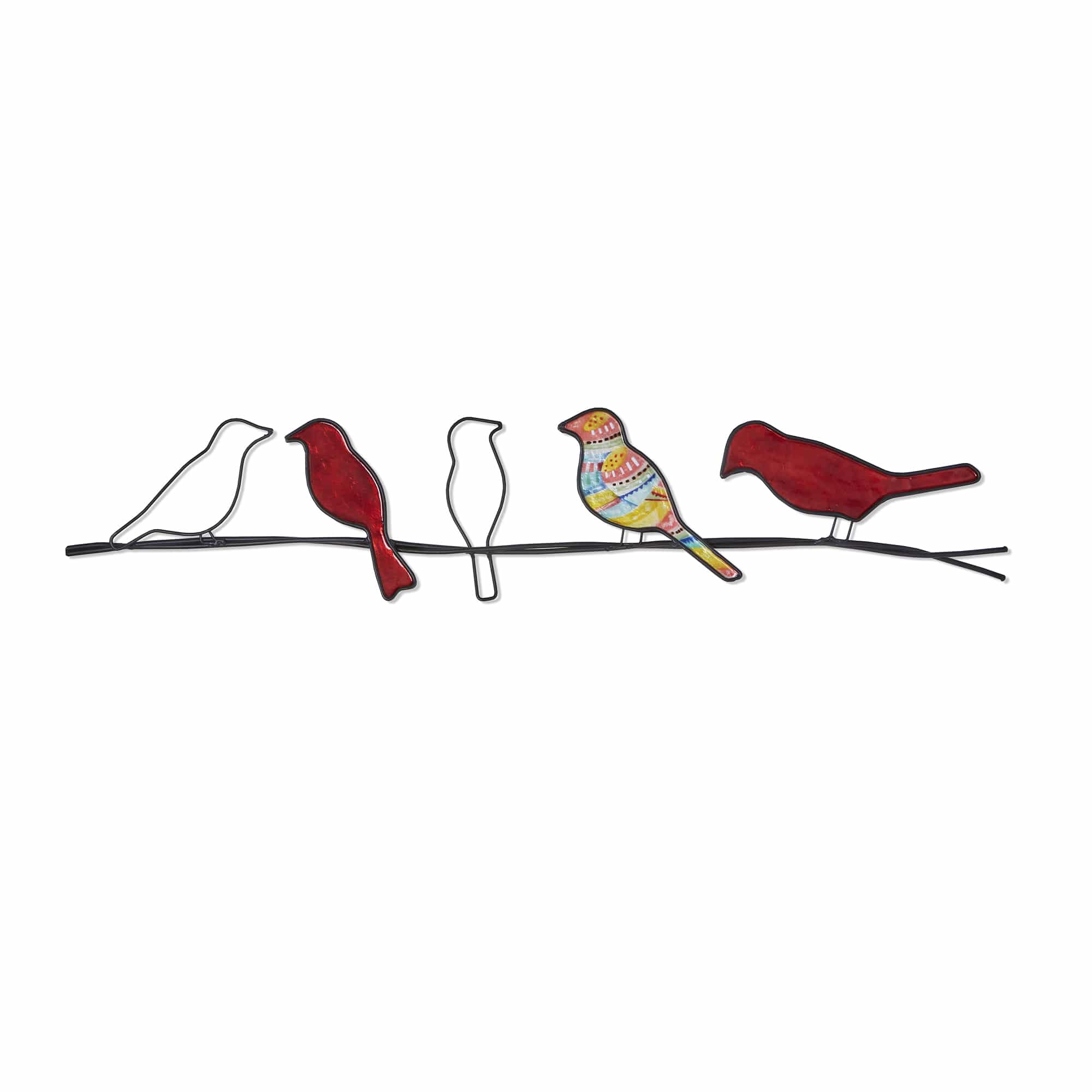This hummingbird is inspired by the Ruby-throated hummingbird, commonly seen in Eastern North America in the summer. Small yet agile, this hummingbird flies all the way to the southern parts of Central America for the winter. The artist captures the hummingbird in mid-flight. Its chest is adorned with capiz shell, which is then hand-painted to the magnificent colors seen in this species. Bring the spirt of summer into your home by adding this piece of art to your wall.
The basic frame of the hummingbird is created using tin, which is powder coated with a black finish. The frame is reinforced using tin wire along the inner edge. Capiz is an oyster shell and the primary purpose of the oyster is as a source of food. However, the by-product, the shell, can be used for decoration. Due to it being a natural material, the natural colors of the capiz come through as tans and browns underneath the paint. The shell is then painted the bold colors you see. The entire front facing piece is carefully hand-painted keeping in mind the reflective qualities in the color of hummingbirds.
